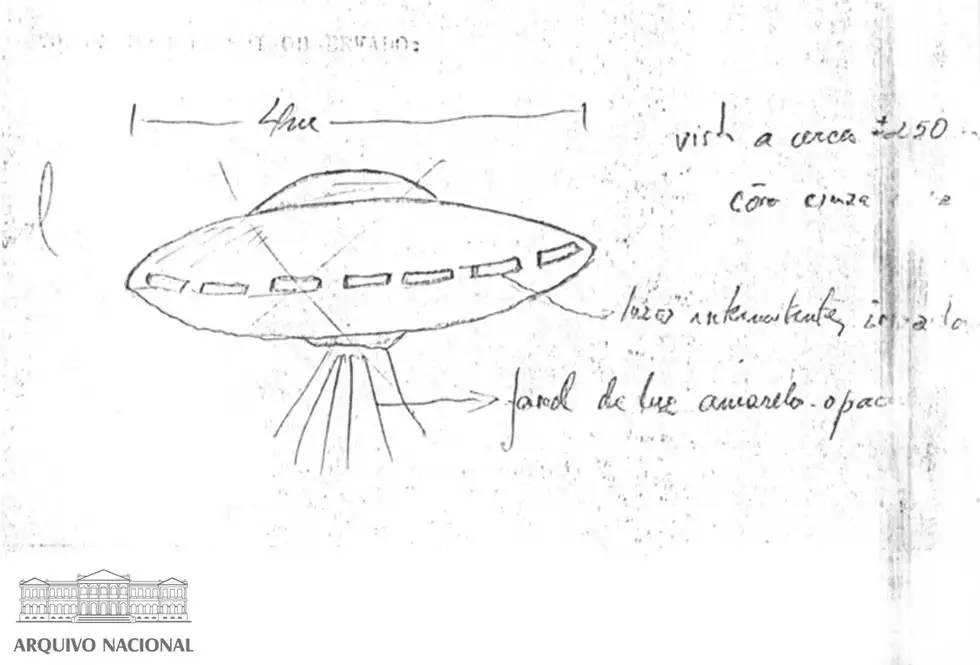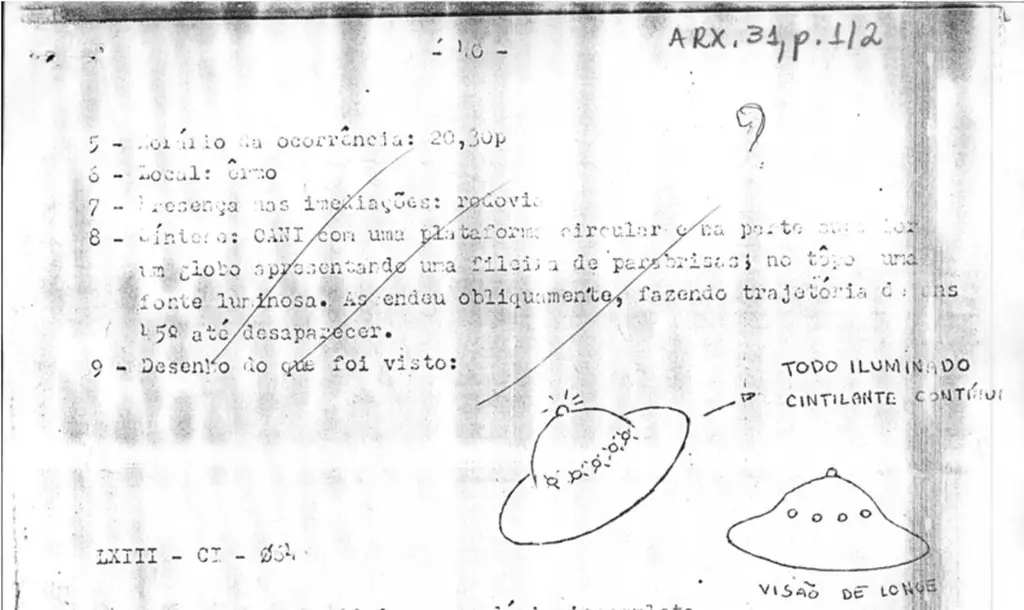
In the vast and vibrant landscapes of Brazil, where the lush Amazon meets bustling metropolises, lies a narrative not just of natural wonders but of cosmic intrigue. Over the decades, Brazil has emerged as a fascinating chapter in the global anthology of UFO sightings, distinguishing itself with an official stance that marries curiosity with transparency. This tale is not merely about unidentified flying objects in the conventional sense but a profound journey into how a nation confronts the unknown.
A Night to Remember: The Official Night of the UFOs
The saga of UFOs in Brazil reached its zenith on a memorable night in May 1986, an event that would etch itself into the annals of ufology as “The Official Night of the UFOs.” On this extraordinary evening, the Brazilian Air Force found itself in an unprecedented pursuit of 21 unidentified flying objects. These were not fleeting shadows in the night sky but luminous entities, witnessed by hundreds across four states, their presence affirmed by both eye and radar.
The response was swift and decisive. Lieutenant General Octávio Júlio Moreira Lima, then head of the Brazilian Air Force, mobilized five fighter jets in a daring attempt to intercept the mysterious visitors. Despite their efforts, the luminous objects eluded capture, demonstrating maneuvers and speeds beyond human comprehension. This event alone could fuel countless tales, but it was Brazil’s response that truly set it apart.
Transparency and Investigation: A Public Archive
In an era where UFO sightings are often shrouded in secrecy, Brazil took a path less traveled. The nation not only acknowledged these encounters but promised a detailed investigation. This commitment materialized in the form of a comprehensive report, eventually made accessible to all through the National Archives of Brazil. Herein lies the heart of Brazil’s unique approach: transparency. The archives, a repository of over 20,000 pages spanning reports, drawings, and even audio recordings from 1952 to 2016, stand as a testament to Brazil’s open-minded investigation into the 743 incidents recorded by its military.
SIOANI: Systematic Monitoring of the Unexplained
Amidst the backdrop of the Cold War and national curiosity, Brazil established the Unidentified Aerial Object Investigation System (SIOANI), under the leadership of Commander Gilberto Zani de Mello. From 1969 to 1972, this unit embarked on a systematic quest to understand the unexplained. Through interviews, sketches, and bulletins, SIOANI epitomized an organized approach to UFO phenomena, a rare endeavor within the military frameworks of the time.
Cultural Context and Global Recognition
Brazil’s engagement with the unexplained is not merely a governmental or military venture but deeply interwoven with the cultural fabric of the nation. A country where spirituality and the supernatural find a harmonious existence, Brazil’s open-mindedness towards UFOs mirrors its broader acceptance of the unknown and the unexplainable. This cultural backdrop, coupled with official endeavors like SIOANI and the public archives, positions Brazil as a pioneer in the global dialogue on UFOs.

In recent years, the conversation around UFOs has gained momentum, with entities like NASA adopting methodologies to study unidentified anomalous phenomena. Brazil’s historical and ongoing efforts in this realm, underscored by its policy of transparency, offer valuable insights and set a precedent for global approaches to these mysteries.
Looking Up and Beyond
Brazil’s story in the context of UFO sightings is more than a series of isolated incidents; it’s a narrative about how a nation confronts the unknown with an open heart and mind. The Official Night of the UFOs, the establishment of SIOANI, and the accessibility of comprehensive archives illustrate a journey of curiosity, skepticism, and openness. As the world continues to look up at the skies with wonder and intrigue, Brazil’s bold approach to UFO sightings stands as a beacon of transparency, urging us to explore the unexplained with courage and openness.


Leave a Reply